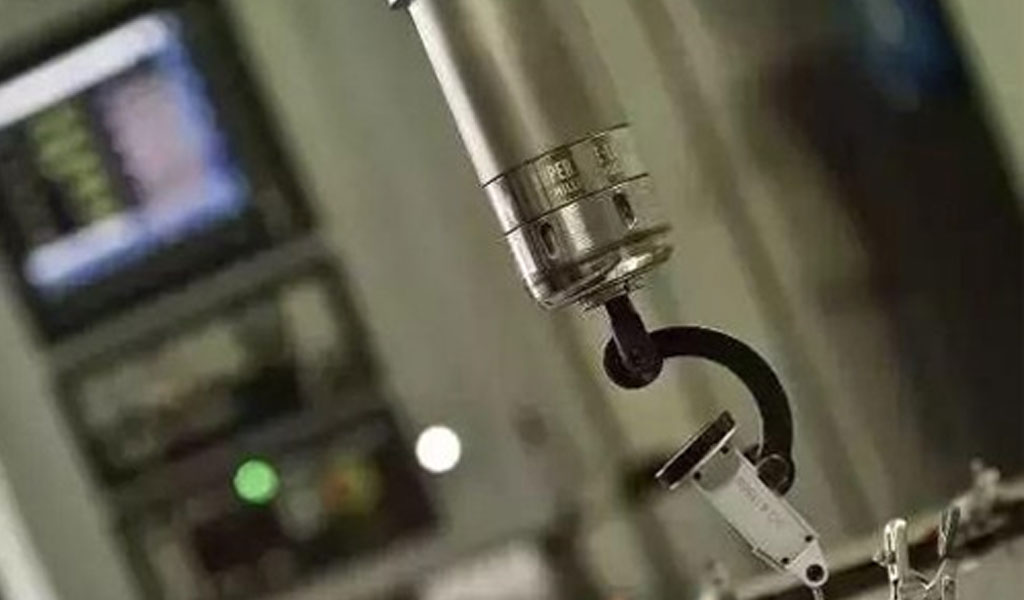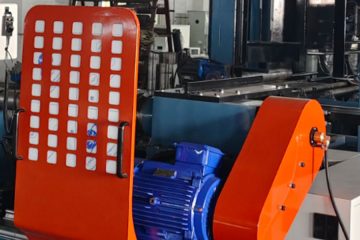CNC machine tools will inevitably be affected by various factors during the machining process, which will cause certain deviations in the machining accuracy and bring some inconvenience to production and life.
1. Accuracy Problems in CNC Machine Tool Machining

1.1 Influence of position error in CNC machine tool machining on machining accuracy
Position error refers to the amount of variation or deviation between the actual surface, axis or symmetry plane of the processed part relative to its ideal position, such as verticality, position, symmetry, etc. The position error in CNC machine tool machining usually refers to the dead zone error. The main reason for the position error is the machining error caused by the gap and elastic deformation generated during the transmission of the machine tool parts, and in the machining, the tool head of the machine tool needs to overcome the friction force and other factors lead to position error. In the open-loop system, the position accuracy is greatly affected, while in the closed-loop servo system, it mainly depends on the accuracy of the displacement detection device and the speed amplification factor of the system, and generally has little impact.
1.2 Machining accuracy error caused by geometric error in CNC machine tool machining
In CNC machine tool machining, due to the influence of external factors such as external force and heat generated by the tool and fixture, the geometric accuracy of the machine tool is affected, and the parts processed on the machine tool are geometrically deformed, resulting in geometric errors. According to research, the main reasons for the geometric errors of CNC machine tools are nothing more than the following two: internal factors and external factors. The internal factors of the geometric error of the machine tool refer to the geometric error caused by the factors of the machine tool itself, such as the levelness of the machine tool table, the levelness and straightness of the machine guide rail, the geometric accuracy of the machine tools and fixtures, etc. External factors mainly refer to geometric errors caused by factors such as external environment and thermal deformation in the machining process. For example, during the cutting process of tools or parts, geometric errors are generated due to thermal expansion and deformation, which affects the machining of machine tools. Precision and machining accuracy of parts.
1.3 Machining accuracy error caused by machine tool positioning in CNC machine tool machining
Through the long-term data analysis and practical operation of parts machining, it can be seen that the positioning of machine tools has a great influence on the machining accuracy of CNC machine tools. From a structural point of view, the machining error of CNC machine tools is mostly caused by the positioning accuracy, and the feed system of the machine tool is the main link that affects the positioning accuracy. The feed system of CNC machine tools is usually composed of two parts, the mechanical transmission system and the electrical control system. The positioning accuracy is related to the mechanical transmission system in the structural design. In the closed-loop system, CNC machine tools can usually prevent the position deviation of the main components in the feed system through the positioning detection device, such as ball screws and other components. For the open-loop system, due to many influencing factors and complicated situations, it is impossible to monitor the positioning, so it has a greater impact on the machining accuracy of the CNC machine tool.
2. Countermeasures to improve the machining accuracy of CNC machine tools
In the machining process of CNC machine tools, the precision of the parts processed directly affects the quality of the product. Some mechanical parts and parts of precision equipment have very high requirements for machining accuracy. Improving the machining accuracy of CNC machine tools is the solution to the problem. The key. Through extensive research and analysis, it is concluded that the countermeasures to improve the machining accuracy of CNC machine tools generally have the following methods:
2.1 Improve machining accuracy by controlling the original error of CNC machine tools
In the process of CNC machine tool machining, the error itself is inevitable. There is a certain error between the processed part and the CNC machine tool. This kind of error that must exist is called the original error.
Therefore, to improve the machining accuracy of CNC machine tools, controlling the original error of CNC machine tools is one of the important countermeasures. Systematic analysis should be conducted on the possibility of original errors, and corresponding improvement measures should be formulated according to the causes and types of errors. During the machining of mechanical parts, the positional accuracy and geometrical accuracy of CNC machine tools have an important impact on the machining accuracy of parts. It is necessary to reduce the influence of positional errors and geometrical errors on parts through position control and geometrical accuracy control. At the same time, for the deformation error generated during the machining, it is necessary to use air cooling, water cooling and other methods to control the thermal deformation during the machining, so as to reduce the influence of the machining accuracy caused by the thermal deformation error. At the same time, for the position error, it is necessary to choose a tool suitable for the material of the part reasonably to avoid deformation of the tool. At the same time, a reasonable fixture should be selected according to the shape of the blank of the part to be processed. If necessary, the fixture should be specially designed for the shape and size of the part to avoid Position error.
2.2 Reasonably design the core components of the machine tool to avoid positioning errors
The positioning accuracy of the machine tool has an important impact on the accuracy of the parts, and the core components that affect the positioning accuracy of the machine tool, such as the straightness and levelness of the feed system, guide rails, and worktables, etc. When designing CNC machine tools, it is necessary to choose core components reasonably. For example, when selecting ball screws widely used in machine tools, the accuracy of ball screws should be fully considered, and more mature ball screw technology should be selected and installed. The support of the ball screw can also not be ignored. The support of the ball screw is closely related to the transmission accuracy of the system. The support of the ball screw is mainly determined by the axial load and the rotation speed, which has an important impact on the machining accuracy of the CNC lathe. Precision fixing and support methods. And during the design process, the bearing capacity of the ball screw should be strictly checked.
The drag chain, as a part of the external protection of the machine tool, is now indispensable to the machine tool. Due to its chain link structure, it will also generate certain vibration when following the movement of the tool holder. This vibration will be directly transmitted to the tool, which will eventually affect the machining accuracy to a certain extent.
2.3 Improve the machining accuracy of CNC machine tools through real-time monitoring technology
With the continuous improvement of numerical control technology, the whole process of CNC machine tools is monitored in real time, the error links in the process of machining are adjusted in time, and the error data of each link in the process of machining is collected and fed back to the control terminal, and passed The error data adopts the corresponding error compensation mechanism, and timely error compensation can effectively improve the machining accuracy of the parts.


